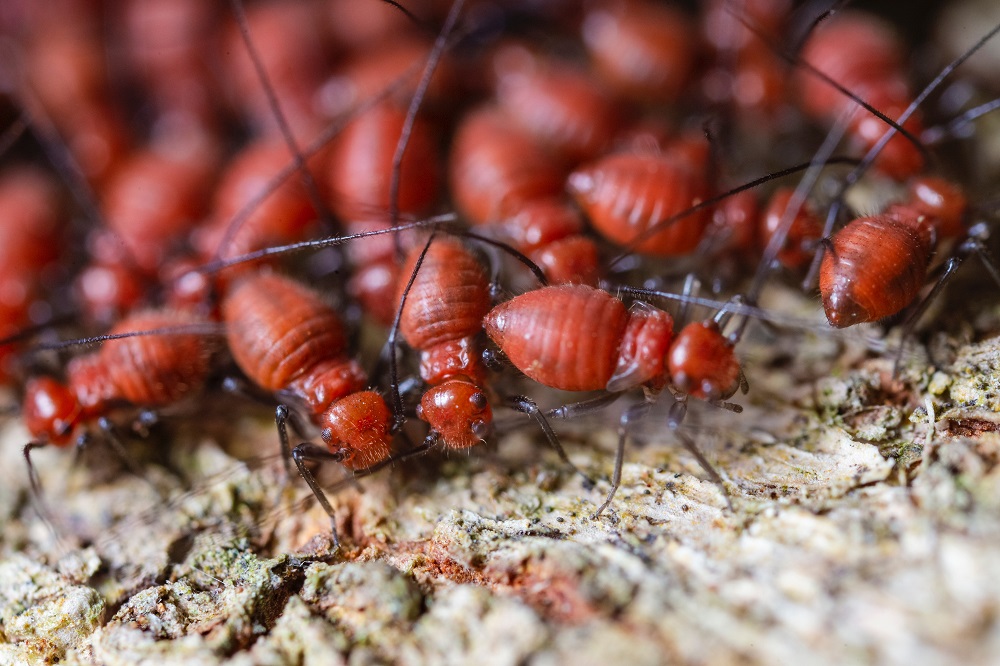Wood furniture, household linens, documents… all at risk from this xylophagous insect that lives in colonies and can have disastrous consequences on our homes. Read all our termite control in Miami, FL tips to find out if your home is infested–and what you can do about it today.
Fond of heat and humidity, termites are insects that move in colonies underground and feed on cellulose, a natural substance found mainly in wood.
Termites propagate by three different means:
- by flying away, once a year, to reproduce and acquire new territories;
- by separating into underground networks to create new colonies; or
- by being transported via wood, earth, rubble, or other infected cellulose-based materials.
Think of all the different items in your house that contain cellulose–wood, important papers, even bedsheets. Once introduced into the home, like bed bugs, these pests can completely turn your life upside down! A colony of termites can consume up to five grams of wood per day, causing untold damage to your property.
Being highly sensitive to light, their destruction takes place in-depth, where it isn’t yet visible. Termites can consequently remain in a building for years without being detected. Only when it is too late and the invisible structural damage has already been done does the collapse occur: ceilings, flooring, or frames give way, which can cause serious property damage as well as accidents for friends or loved ones.
How do I detect the presence of termites in my home?
Here are some key signs that can help you detect the presence of termites:
1) The wood produces a hollow sound
When termites consume wood, they eat it from the inside, leaving only a thin outer layer. Tapping or pressing on a termite-damaged area should make either a hollow ringing or paper-like sound.
2) The vacuum cleaner passes through the baseboard or a finger cracks the doorframe
These are some of the most common things people report as the first sign of termites. Once termites have eaten away at the structural integrity of the wood, a simple push is enough to penetrate the damaged area.
3) Your doors and windows are difficult to open
When termites devour wood, their droppings–or “mud”–create a protective environment that traps heat and moisture. The excess can cause wood to swell, making it harder to move.
How do you exterminate termites?
These durable insects can only be killed with strong chemicals.
Termite detection traps at termite control Miami, FL are first placed every two or three feet on the ground, to check for the insects’ presence. The traps have the dual advantage of eradicating colonies while preserving the building. If the presence of insects is confirmed, baits containing a long-acting insecticide are used. Termites ingesting the insecticide spread it around the termite mound before they die, ensuring the whole colony is eradicated. Inside a house, the treatment often involves an injection carried out in three stages: drilling, installation of injectors, then injections allowing the curative biocidal product to be deposited inside a material.
The masonry floors of a cellar require an injection line made by drilling vertical wells (directly from the walls). On dirt floors, insecticides should be spread over the entire surface of the floor.
To treat the perimeter and shear walls as well as the partitions, carry out the injection line by drilling horizontal wells in the walls as close as possible to the finished interior floor. The buried walls are treated by the grid, horizontal wells being drilled over the entire height of the buried walls. If this sounds too complicated to attempt on your own, we recommend you search for termite exterminators near me to find the best professional exterminators near you to complete the task.

